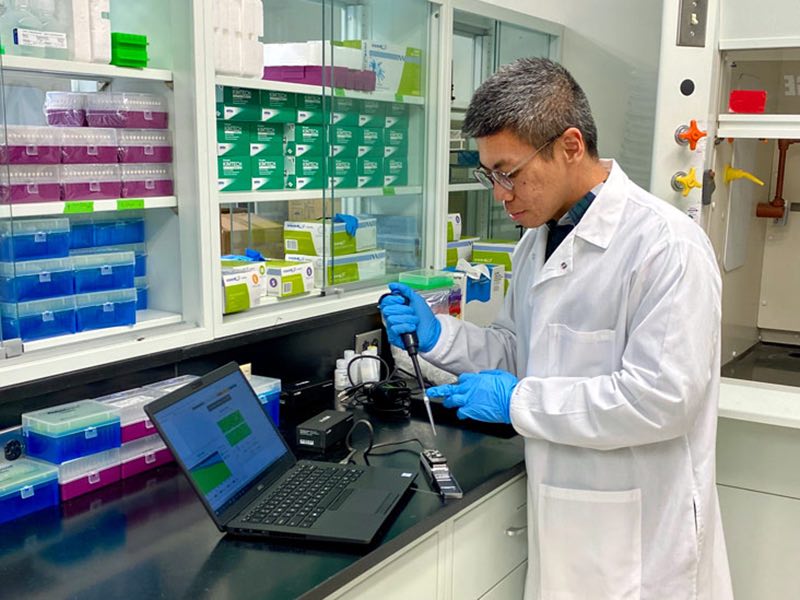Q&A with Tiong Gim Aw, PhD, on wastewater testing, polio, and infectious disease

New York recently declared a state of emergency in response to the discovery of polio within its community.
The reemergence of polio calls to mind several questions involving public health policy, but one of the more interesting aspects of the polio story is the use of wastewater testing as a form of tracking the spread of the disease.
We caught up with Dr. Tiong Gim Aw in the Department of Environmental Health Sciences for a quick Q&A on wastewater testing.
One of Aw’s areas of expertise includes the rapid detection of waterborne and foodborne pathogens by advanced molecular techniques, viral metagenomics, fate and transport of viruses in urban water catchments. Therefore he is uniquely positioned to lend insight on what is currently happening in New York.
What does the case in New York mean for water testing as a path to protect public health?
I assume you refer to wastewater. We need to be clear, as water and wastewater are different.
Wastewater testing or surveillance can give clinicians a warning signal of a potential increase or decrease in infectious disease.
Being aware of an increase or decrease can help inform efforts toward preventing or treating illness and to address potential surging needs for supplies and staff. It’s a secondary data for us to know what’s going on in the community, so that we can plan accordingly.
Does the presence of polio in New York wastewater put that community more at risk, or is it more of an indicator of a larger issue that’s already present?
I would not say that the presence of poliovirus (not polio) in New York wastewater puts the community more at risk, because wastewater will need to be treated (similar to water supply) before discharging to the environment or for human consumption (in the case of water supply).
Does the presence of poliovirus in New York indicate trouble for other communities in any way?
Perhaps. The emergence of this virus shows that polio-free countries including the U.S. will remain at risk of polio re-infection or re-emergence.
This article provides greater context:
https://www.who.int/emergencies/disease-outbreak-news/item/2022-DON408
How is Tulane contributing in the arena of wastewater research?
I believe my research group is the only lab at Tulane focusing on environmental virology. We are working to optimize methodology to detect viruses of public health concern such as enteric viruses (e.g. poliovirus, hepatitis A virus), SARS-CoV-2, and recently monkeypox virus in environmental samples.
We are also working on an EPA-funded project to understand virus behavior and persistence during wastewater and water treatment processes.
What more can (and should) we be doing in the field of wastewater testing?
A method with short turnaround time should be developed for rapid public health response. We also need to work closely with public health authorities to ensure that sampling and testing strategies are driven by public health needs and that results are integrated with other sources of surveillance information to support decision-making.
Learn more about Aw and his environmental health microbiology and water quality research group.
